Cactus is delighted to see that we offer language and/or TEFL courses in ALL 10 cities that made it to the top 10 so, whichever language you want to learn (you’re on a winner with Italian), here’s the pick of places where your linguistic skills will be honed and your taste buds truly wooed.
1. Florence, Italy 
The first of an impressive five Italian cities to make it into the top 10, the Tuscan city of Florence needs little introduction. An Aladdin’s cave of basilicas, frescoes and piazzas, known the world over for its fine art and architecture, it seems that anyone coming to soak up Florence’s wonders will be treated to a fine feast at the end of a hard day’s sightseeing. Hardly surprising when you consider the abundance of local produce – including pecorino cheese, olive oil and wild game – and world-class wines produced in the surrounding Tuscan hills, Chianti and Montepulciano to name a few. You can even combine your love of food with your language learning by taking an Italian & Cooking course here – the ultimate way to immerse yourself in real Florentine life!
Italian courses in Florence
2. Paris, France 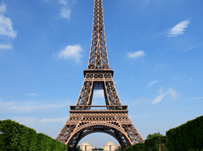
Inherently proud of their cuisine, there is perhaps no better place to experience the finest of French food than in its capital, Paris. A place of lavish restaurants and Michelin stars, it is easy to splash your cash in gourmet heaven and let an impossibly knowledgeable sommelier talk you into that vintage Burgundy. A treat once in a while, perhaps, but not for the average tourist. Instead, head off down a side-street, surround yourself with the clatter and chatter of a busy bistro, and you’re more than likely to be wowed by ‘simple’ local fayre of steak-frites, veal, moules marinieres, (mussels), bouillabaisse (a Mediterranean-style fish stew), foie gras, charcuterie, salade nicoise and more. With an ample supply of fresh baguette and a carafe of wine on the side, this is dining as the locals do. NB. Cost-conscious diners should consider having their main meal at lunchtime, when you can take advantage of the ‘prix fixe’ menu.
French courses in Paris
3. Rome, Italy 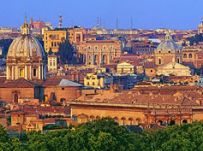
Steeped in history and compact enough to be able to get around easily, Rome is a great place to learn Italian. And when it comes to eating you won’t be disappointed either. With culinary traditions harking back to the past, you can expect to eat basic yet hearty food while staying in the capital: fresh vegetables (artichoke being the most popular), inexpensive cuts of meat (particularly the innards), salted cod (filetti di baccala), deep-fried courgette flowers (fiori di zucca) and pecorino cheese are common menu items, while ricotta cake may grace your plate for dessert. Just as well you can walk around easily to work some of it off…
Italian courses in Rome
4. Sorrento, Italy 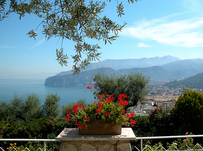
Sitting on the coast in Italy’s beautiful Campania region, Sorrento is a place for fish and seafood lovers. With fresh produce plucked from the sea by day and cooked to perfection at your evening meal, it barely matters what you order as you can be sure it will exceed expectations. Even if you order a typical staple such as pasta or pizza, it will be lovingly cooked with locally-produced olive oil, sun-ripened tomatoes and silky mozzarella. And to wash it all down? Why, limonello of course. What else are they going to do with all those lemons? It would be rude not to…
Italian courses in Sorrento
5. York, UK 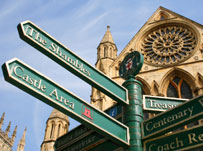
An unexpected location on this top 10 list, perhaps, yet there’s a lot more to this northern English city than intially meets the eye – or stomach. Set in the North Yorkshire countryside, York is home to some of the best food and drink providers in the UK – from local farm produce to artisan cheeses, delicatessens and quality butchers. Even going for a simple walk – the Moors and Dales offering superb natural scenery for lovers of the great outdoors – you will be treated to cosy tea rooms and traditional pubs serving wonderfully fresh, home-made produce and local beers. In celebration of its food and drink, York plays host to a string of food-related festivals, including the annual York Food Festival and the Dales Festival of Food; if you’re coming to take a TEFL (Teaching English as a Foreign Language) course, you won’t regret coinciding it with one of these highlights and socialising with the locals who are undeniably proud of their culinary heritage. Cactus offers TEFL courses in York; our closest location for English language courses is Leeds.
TEFL courses in York
6. Siena, Italy 
The little sister to Florence, Siena is an excellent option if you want to enjoy Tuscany on a smaller scale. It is by no means less generous on the food front however. Sienese cuisine is characterised by cereals, pulses, herbs, game and pork, making meats such as wild boar, hare and roast pork popular menu inclusions here. Vegetarians might enjoy specialities such as ribollita (Tuscan vegetable and bread soup, prepared over three days), pici (thick, chewy spaghetti) and pasta with chickpeas, while there are no barriers to indulging in Siena’s classic sweets of panforte (a cake typically eaten at Christmas) and ricciarelli, crunchy oval-shaped almond biscuits. Then you need simply order a carafe of wine to complete the meal, which will more often than not be a local Chianti far superior to something twice the price back home.
Italian courses in Siena
7. Bologna, Italy 
“La dotta, la gorda, la rossa”, as it is affectionately known, is testament to Bologna’s credentials as a centre of learning, eating and architecture. La gorda, or ‘the fat one’, refers to its notoriously delicious food which has made it, for many, Italy’s gastronomic capital. In short, it’s impossible to eat badly here. Tagliatelle al ragù (spaghetti bolognese in its original, superior form), lasagna, tortellini, trippa bolognese (tripe served with eggs and cheese) and filetto alla bolognese (calf meat marinated in Marsala wine) are all popular local dishes. You should also add ‘buonissima’ to your Italian vocabulary, particularly for use outside the classroom…as well as meaning ‘very tasty’, an expression that will come in very handy, this is the name of a typical regional cake that’s well worth tasting.
Italian courses in Bologna
8. San Sebastian, Spain 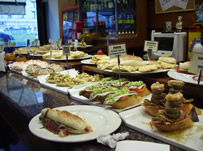
It could be called fanatical, the Basque relationship with food. Not that they necessarily spend hours over it or charge you a fortune for it – ok, so it may have more Michelin stars per head than anywhere else in the world, but what it really comes down to here is exquisite detail to food in everyday life. Nowhere is this more apparent than in San Sebastian, the capital of Gipuzkoa in the Basque country – and incidentally home to a superb natural bay, making it a fantastic beach resort. In San Sebastian, every other door seems to open into a tapas bar. And each one of these bars seems to creak under the weight of a delectable display of freshly-made tapas, called ‘pinchos’, ranging from quails’ eggs, chorizo, croquettes, anchovies, stuffed peppers, acorn-oil-infused ham and more ham to all manner of seafood to reflect its enviable maritime location: tiger mussels (mejillones tigres), barnacles, salt cod, spider crab and sardines, to name but a few. Just tally it all up and let the barman know how much you’ve had – you won’t want to underestimate as it’s all worth every single cent. ¡Buen provecho!
Spanish courses in San Sebastian
Read about famed gastronomy convention ‘Gastronomika’ in San Sebastian
9. Barcelona, Spain 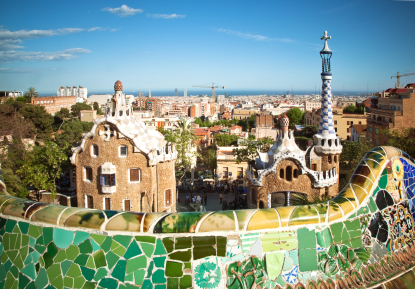
People go to Barcelona for many reasons and, if food is yours, then you’ve chosen well. Ninth on the list of Europe’s food heavens, Barcelona offers an enormous number of bars, bistros and restaurants serving typical Catalan specialities such as fideua (similar to paella except with noodles instead of rice) and zarzeula (seafood stew) as well as science-defying dishes inspired by famed local and highly experimental chef Ferran Adrià. If you want a break from eating out, then grab your basket and head for one of the city’s colourful markets (La Boqueria and Sant Antoni are both excellent) to create your very own picnic – an excellent way to practise your Spanish and sample exciting new foods!
Spanish courses in Barcelona
10. Edinburgh, UK 
Being one of Europe’s top tourist destinations, Edinburgh pulls out the stops when it comes to food. Fully aware that it needs to caters to all tastes, you can happily stay here a while and eat Indian, French, Thai, Japanese or Mexican food each night of the week. You can’t come all this way, however, and not indulge in the local specialities, so intrinsic are they to the Scottish way of life. So take your pick from traditional Scottish fayre in the form of haggis (a savoury pudding cooked in a casing of sheep’s intestine – they say not to be put off by the description), deep-fried Mars bars (yes, they really do this), stovies (a potato-based dish), fresh salmon from its very own lochs or real Scottish porridge to start the day…and then you’ll truly be spoilt for choice when it comes to drinking establishments at the end of the day.
English courses in Edinburgh
Cactus offers language courses in more than 30 languages, in 60 countries and 500 destinations worldwide. We also run our own language courses in the UK and in the US/Canada, which are the ideal way to learn the basics or brush up on previous language knowledge in advance of a holiday or business trip abroad.










